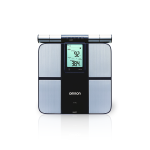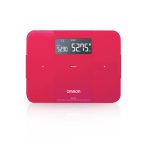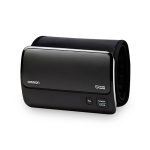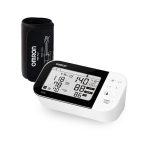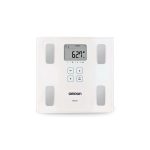How to Choose the Best Body Composition Monitor for Athletes
November 14, 2023 2024-02-23 12:24How to Choose the Best Body Composition Monitor for Athletes

How to Choose the Best Body Composition Monitor for Athletes
Many athletes aspire to achieve great physical fitness as their ultimate goal. Whether you’re a professional athlete or a fitness enthusiast, tracking your body composition is essential for understanding your progress and making informed decisions about your training and nutrition.
Earlier body composition analysis was a complex and expensive process reserved for research labs and medical facilities. However, with the advancement of technology, body composition monitors are now widely available for personal use.
But with so many options on the market, how do you choose the best one for athletes?
When selecting a body composition monitor that suits your athletic needs, there are key factors to consider.
Accuracy is Key
For athletes, accuracy is paramount when it comes to body composition monitoring. A small error in your body fat percentage or muscle mass measurement can lead to significant misinterpretations of your progress and affect your training and nutrition decisions. When choosing a body composition monitor, look for devices that are validated for accuracy. Devices that use methods like dual-energy x-ray absorptiometry (DXA), air displacement plethysmography (Bod Pod), or underwater weighing tend to be more accurate.
Still, these are usually found in research or clinical settings. Bioelectrical impedance analysis (BIA) scales are more common for personal use and can provide reasonably accurate results, but the quality can vary from one brand to another. Read reviews and consider investing in a well-established brand known for its accuracy.
Data Points and Metrics
Athletes often require more comprehensive data than just body fat percentage and weight. Look for a body composition monitor that offers a wide range of metrics. Besides body fat and muscle mass, consider devices that provide insights into visceral fat, bone density and more. These additional data points can be crucial for understanding how your body responds to your training and nutrition plan. The more comprehensive the data, the better you can tailor your fitness regimen to your needs and goals.
Connectivity and Compatibility
In the modern fitness age, connectivity features make data tracking easier. Many body composition monitors come with Bluetooth or Wi-Fi capabilities, allowing you to sync your data with a smartphone app or other fitness tracking tools. This convenience can help you keep a digital record of your progress and easily share it with your trainer, coach, or healthcare provider. Before purchasing a monitor, ensure it is compatible with the devices and apps you use for your fitness and health management.
User-Friendly Interface
The ease of use of a body composition monitor is a critical factor, especially for athletes who want to streamline their data collection process. Look for a monitor with a user-friendly interface and clear instructions. Touchscreen displays and mobile apps that provide easy-to-read results and graphs can be particularly helpful. Complicated devices can be frustrating and lead to inaccurate readings due to user errors. If more than one athlete will be using the monitor, think about whether it allows for numerous user profiles.
Portability and Storage
A portable body composition monitor may be more convenient if you’re an athlete who travels frequently. Some monitors are compact and lightweight, making them easy to pack and take. Additionally, check if the device offers onboard storage for measurements. The ability to store your data on the monitor itself can be beneficial, especially if you don’t always have access to a smartphone or other devices.
Price and Budget
Body composition monitors vary widely in price, and the cost can be a significant factor for athletes. While you want to opt for the most advanced and expensive device, it’s essential to consider your budget. Determine how much you’re willing to invest and find a monitor that balances affordability and the features you need. Remember that cheaper models might sacrifice accuracy and data comprehensiveness, so striking the right balance is crucial.
Brand Reputation and Reviews
Research and read reviews about the brand and model you’re considering. Look for well-established brands with a reputation for producing accurate and reliable body composition monitors. Athletes and fitness enthusiasts often share their experiences and recommendations online, which can help you make an informed decision. Don’t be swayed by flashy marketing; rely on real user feedback and expert reviews to guide your choice.
Warranty and Customer Support
Finally, consider the warranty and customer support offered by the manufacturer. The electronic components of body composition monitors can sometimes malfunction, so having a reliable warranty can save you from additional expenses in case of any issues. In addition, find out if the manufacturer offers good customer service and if their response times to questions or issues are satisfactory.
Omron body composition monitors are known for their reliability and accuracy in providing essential data about your body, including body fat percentage, muscle mass, visceral fat, and more. These monitors are a reliable choice for athletes looking to track and optimize their fitness progress.
Conclusion
Remember that the right monitor for you will depend on your individual needs and priorities, so take your time to research and select the device that aligns with your objectives. Accurate and insightful body composition data can be a game-changer in your athletic journey, providing the information you need to reach new heights in your performance.

